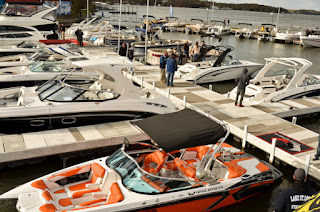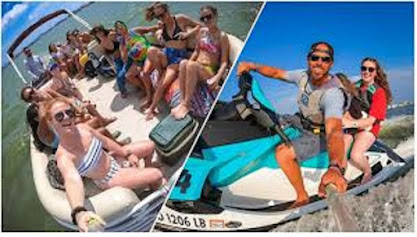Health and Safety Check Up For Your Boat
Before the holiday take the time and have a Vessel Exam (VE) or also known as A Vessel Safety Check. A VE is a courtesy examination of your boat (Vessel) to verify the presence and condition of certain Safety Equipment required by State and the Federal regulations.
Do you have the right safety equipment for your boat size? Do you know what is needed?
he U.S. Coast Guard has compiled a list of required boating safety equipment, which they have determined to be the minimum equipment and operating standards as deemed necessary under federal laws.
This list is the minimum federal USCG required list and some states may have added additional items/safety equipment, so be sure to check your states boating laws and requirements.

Life Jackets and personal floatation devices – The USCG requires one approved – Type I, II, III, or V, life jacket or life vest per person on board. If the vessel is 16 feet or more in length, one throwable floatation device – Type IV – like a ring is required as well. Life jackets must be easily accessible, in good working condition, and fit the individual it is intended for properly. Each state has their own regulations regarding children's life jackets.
Fire Extinguishers –For boats 26 feet and less, it is required to have at least one B-1 type Coast Guard-approved hand portable fire extinguisher. Again, that is the minimum. Boats 26 to 40 feet, two B-1 type or one of the B-2 type USCG approved extinguishers are required. Boats that are 40 to 65 feet in length should have three B-1 extinguishers or one B-1 and one B-2 USCG approved fire extinguisher. And boats over 65 feet need one to eight (depending on the weight of the vessel) B-2 along with a fixed system in the machinery space. Of course you can choose to have a fixed system in any size boat and the handheld portable extinguishers requirements for boating safety would be less.

Bells and Whistles –Any boat under 40 feet should have an efficient sound producing device such as a horn or whistle, and boats over 40 feet are required to carry a bell and whistle. The mouth of the bell must be at least 7.87 inches in diameter and the whistle should be able to be heard at least ½ nautical mile.
Visual Distress Signals – While in Coastal Waters, the Great Lakes, and any U.S. owned boats which are on the high seas, if less than 16 feet in length must carry three approved night signals. Boats over 16 feet must have three day and three night signals on board.
Ventilation –Boats built before 1980, must have at least two ventilation ducts which are capable of efficiently ventilating every closed compartment that contains a gasoline engine and/or tank, except those having permanently installed tanks which vent outside of the boat and which contain no unprotected electrical devices. Engine compartments containing a gasoline engine with a cranking motor are required to have power-operated exhaust blowers controllable from the instrument panel.
Boats built after 1980 are required to have at least two ventilation ducts fitted with cowls (or their equivalent) for the purpose of efficiently and properly ventilating the bilges of every closed engine and fuel tank compartment using gasoline as fuel or other fuels having a flashpoint of 110 degrees or less.
Backfire Flame Arrestor – Not required for outboard motors. All others are required to have one approved device on each carburetor of all gas engines.

Navigation Rules –Boats over 40 feet are required to have a current copy of the ISDOT ISCG International – Inland Navigational Rules aboard.
There are other items which are not REQUIRED by the USCG, but considered smart to have on board. And again, each state has their own set of regulations regarding boating safety and boating safety equipment which may be beyond that of the USCG.
First aid kit
VHF radio
Extra fuel & water
Tool kit
Sun protection
A bucket to use as a bailer
Oars or paddles
An Anchor with enough chain – depending on where you are boating usually 5x depth
Knowing what is required of you and then complying with those requirements will aid you in staying safe while remaining on the good side of the U.S. Coast Guard and your boat insurance company.
The U.S. Coast Guard and the U.S. Coast Guard Auxiliary will provide a free boat safety check for any small boat. A Vessel Safety Check is completely voluntary and is done as a courtesy for boaters in order to verify all safety equipment is on board and in good working condition.
Contact your local Coast Guard Auxiliary for your free Vessel Exam go to
http://wow.uscgaux.info/content.php?unit=053-19-01&category=vessel-exams
Once all safety requirements have been met, be sure to file a Float Plan before heading out.




Comments
Post a Comment